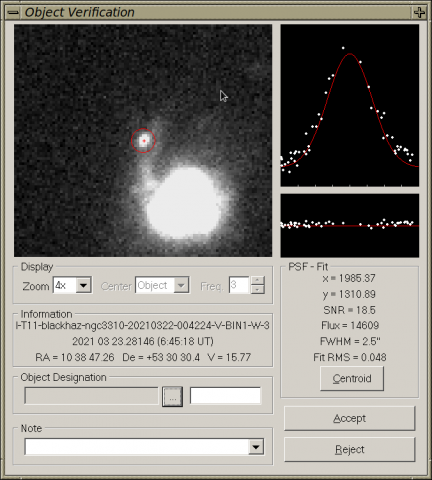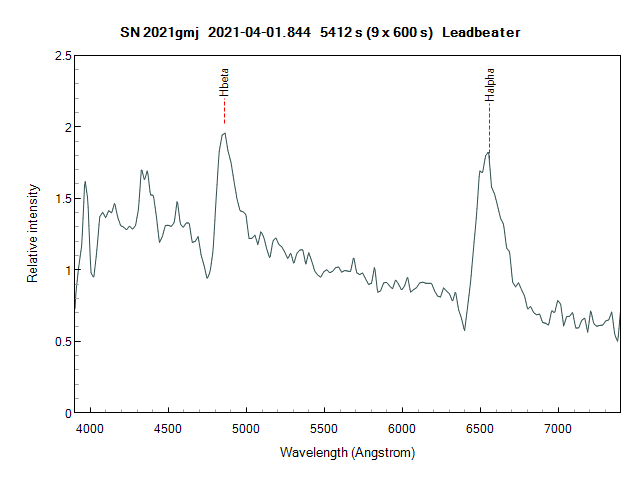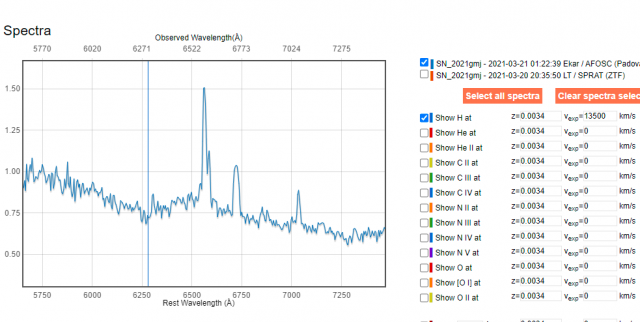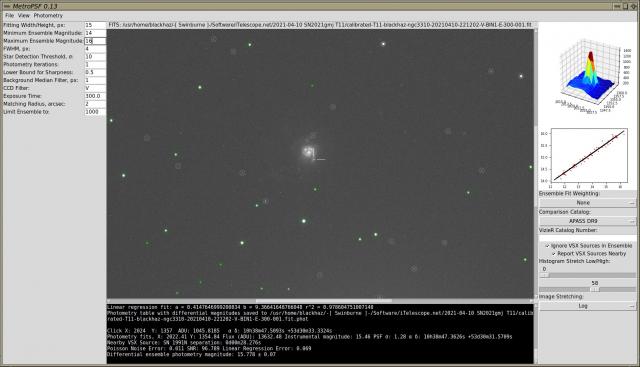› Forums › Variable Stars › possible supernova AT 2021gmj in NGC3310 (UMa)
- This topic has 8 replies, 4 voices, and was last updated 4 years, 9 months ago by
 Maxim Usatov.
Maxim Usatov.
-
AuthorPosts
-
20 March 2021 at 3:19 pm #574919
 Robin LeadbeaterParticipant
Robin LeadbeaterParticipanthttps://www.wis-tns.org/object/2021gmj
Discovered today at mag 16 but at only ~11Mpc could potentially get much brighter in the coming days depending on type (A type Ia could reach ~mag 11 in the absence of extinction)
Well placed (It is almost exactly at the zenith at 23:00 for me)
Robin20 March 2021 at 10:03 pm #583976 David SwanParticipant
David SwanParticipantCaptured at 20:32 UT this evening (20 Mar).
20 March 2021 at 10:15 pm #583977 David SwanParticipant
David SwanParticipantAstrometrica puts it ~ mag 15.6
21 March 2021 at 11:25 am #583983 Robin LeadbeaterParticipant
Robin LeadbeaterParticipantNow classified as a type II. Not surprising for a star burst galaxy I guess
23 March 2021 at 10:14 am #584000 Maxim UsatovParticipant
Maxim UsatovParticipantI have it at V = 15.77 ± 0.05, although correct PSF fit is a little difficult.
Observatory: New Mexico Skies at Mayhill, New Mexico – MPC H06
Telescope: 0.50-m f/6.8 reflector + CCD + f/4.5 focal reducer
CCD: FLI ProLine PL11002M CCD cameraFilter is Astrodon V.
 5 April 2021 at 12:35 pm #584056
5 April 2021 at 12:35 pm #584056 Robin LeadbeaterParticipant
Robin LeadbeaterParticipantThe spectrum at maximum (15.8 ZTF g) showing nice broad Hydrogen Balmer line P Cygni profiles
 5 April 2021 at 10:22 pm #584057
5 April 2021 at 10:22 pm #584057 Hugh AllenParticipant
Hugh AllenParticipantHi Robin,
Very nice supernova spectrum as always. What is the correct way to estimate ejecta velocities along the line of sight from P Cygni profiles? Is it the emission centre to the absorption minimum or to the absorption blue edge?
Cheers
Hugh
6 April 2021 at 12:20 am #584058 Robin LeadbeaterParticipant
Robin LeadbeaterParticipantI normally just measure the shift of the absorption minimum, either relative to the line rest wavelength corrected for z if known or the emission maximum. I guess there must be higher velocities out to the edge of the line where it meets the continuum but my resolution is so low it would bias the result. It looks like the 13500km/s measured in the very early classification spectrum was based on where the broad H alpha emission met the continuum.
 11 April 2021 at 10:25 am #584086
11 April 2021 at 10:25 am #584086 Maxim UsatovParticipant
Maxim UsatovParticipantV = 15.778 ± 0.07 with slightly better data from tonight.
Telescope 0.5 m f/6.8 Corrected Dall-Kirkham with f/4.5 Focal Reducer
Camera FLI PL11002M
-
AuthorPosts
- You must be logged in to reply to this topic.
